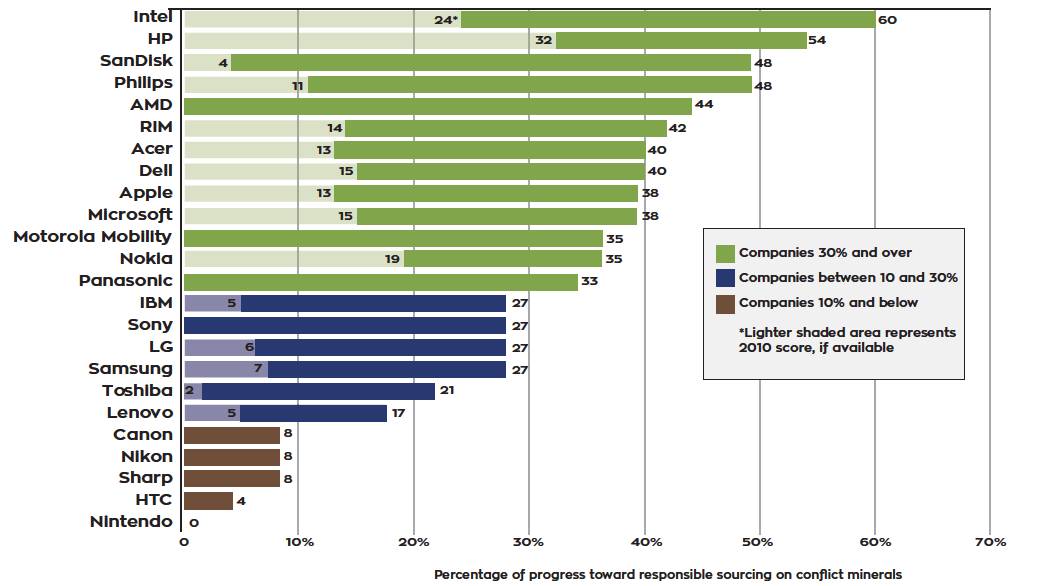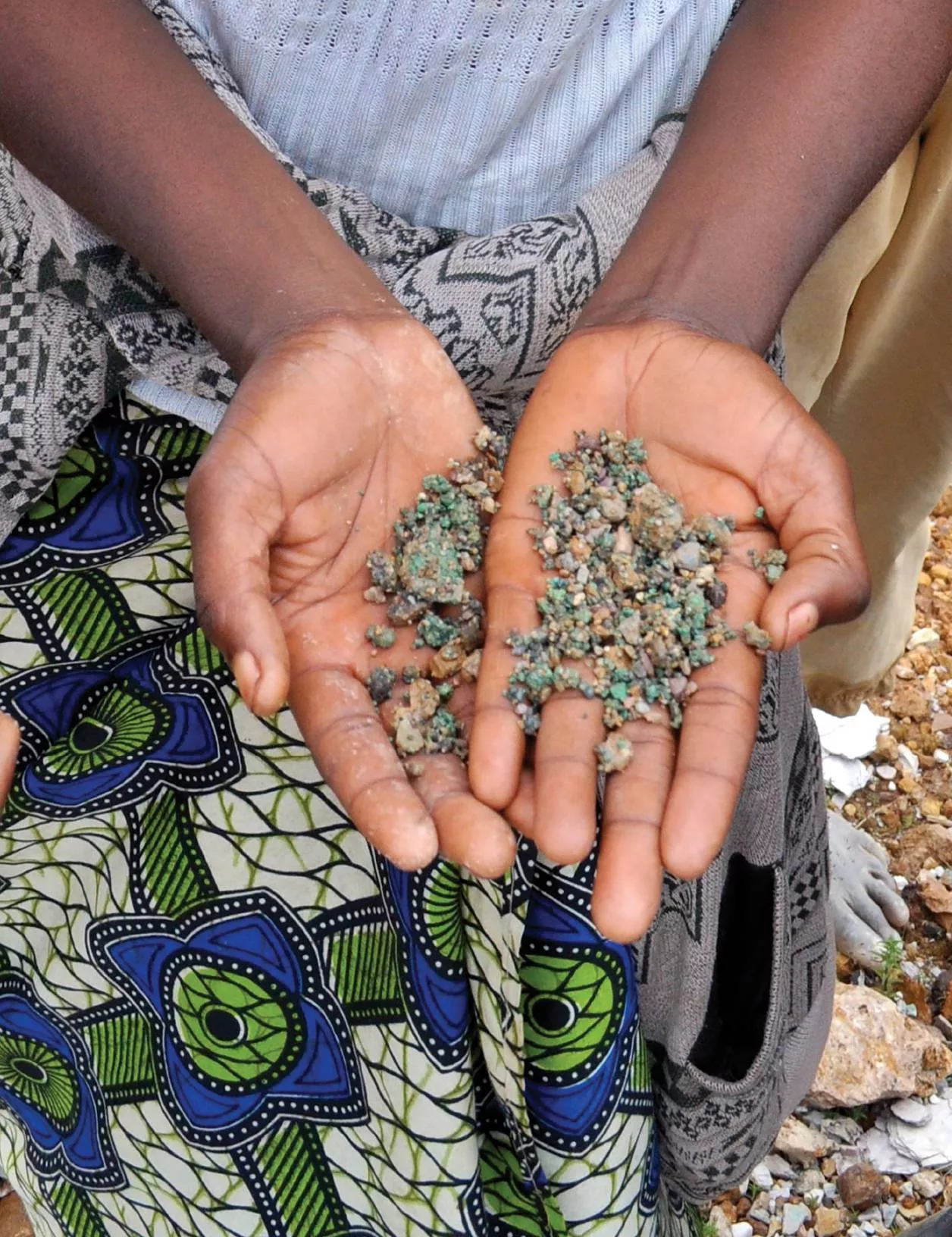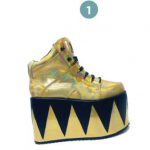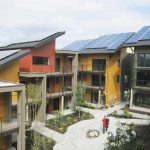THE PROBLEM IN THE DEMOCRATIC REPUBLIC OF THE CONGO
The Great Lakes Region of the Democratic Republic of the Congo (DRC) is rich in 3TGs – tin, tantalum, tungsten, and gold – and is the primary location for the extraction of these natural resources. These minerals are found in many countries, but the consistencies of the ore found in this region are some of the best for electronic and automotive products. Many consumers are unaware that the 3TGs are sourced from a war-torn region and are used in the manufacturing of everyday products such as smartphones, computers, cars (hybrid or electric), jewelry, and even zippers.
The DRC is the fourth largest country in Africa and has an estimated population of over 79 million. At the time of its independence in 1960, the DRC was the second most industrialized country in Africa largely due to its mining and agricultural sectors. It is a country rich in natural resources, such as raw mineral ore, gold, diamonds, and cobalt, and is home to the world’s second largest rainforest. These resources are estimated to be worth $24 trillion. Yet, despite its wealth in natural capital, the DRC ranks 186th out of 187 on the UN Human Development Index, which measures and ranks countries’ levels of social and economic development.
A large percentage of the artisanal and industrial mines located in the DRC lack infrastructure and oversight and are known to be controlled by armed rebel groups. In 2014, a study performed by the International Peace Information Service found that over half of Congolese miners work in mines where armed groups are present. Additionally, mineworkers are often enslaved, being forced to work 48-hour shifts. Child labor is rampant. Mine safety is virtually nonexistent, with mudslides and mine collapses being common occurrences.
Aside from the perilous working conditions and lack of safety standards, miners are paid very little. It is estimated that the average pay is the equivalent of between $1 and $5 a day. The local infrastructure does not benefit from the profits of this trade; rather, the profits often land in rebel pockets that support rape, war, and violence. According to the Enough Project, “armed groups earn hundreds of millions of dollars every year by trading conflict minerals.”
WORKING TOWARD A SOLUTION
There are responsible mines in the DRC; however, there is not yet a formalized process for certifying conflict-free minerals. NGOs on the ground in the region are working on creating processes and identifying trade routes. Mines to Markets is developing a chain-of-custody system for tin and tungsten extraction and processing. Despite these efforts, conflict-free sourcing remains a systemic challenge for stakeholders.
Managing the complexity of this issue and facilitating solutions requires stakeholder engagement. One organization that helps in this regard is the Conflict-Free Sourcing Initiative (CFSI). The CFSI is a nonprofit/business alliance organization that formed in 2011 under the umbrella of the Electronic Industry Citizenship Coalition. More than 200 companies from seven different industries participate with the CFSI. The CFSI also works with smelters, government officials, NGOs, and accounting firms. These stakeholders gather annually at a two-day conference to further these collaborative efforts around conflict minerals.
THE DODD-FRANK WALL STREET REFORM AND CONSUMER PROTECTION ACT
On July 21, 2010, the Dodd-Frank Wall Street Reform and Consumer Protection Act (Dodd-Frank) was signed into federal law. Section 1502 of the new law requires companies that manufacture or contract to manufacture products that contain 3TGs to publicly report to the Securities and Exchange Commission (SEC) whether or not their products contain conflict minerals from the DRC or its immediate neighbors (known as the Covered Countries) and must describe their due-diligence efforts. Many companies have begun using a platform created by the CFSI to comply with these new reporting requirements.
The compliance requirements of Dodd-Frank are being implemented in stages and become stricter with each passing year. Companies were first required to file annually in June 2014, when they reported data from 2013. For the first two filing years, companies had three options on the SEC compliance form for reporting the use of conflict minerals in their supply chains: DRC Conflict-Free, Not Found to be DRC Conflict-Free, or Undeterminable. For the 2015 filing year, the form is changing and companies will only have two reporting options: DRC Conflict-Free or Not Found to be DRC Conflict-Free. This represents a significant change in how companies are required to report. There is speculation that NGOs and socially responsible investors will begin paying special attention to these filings, especially because companies are required to post these filings on their websites.
Identifying and removing conflict minerals is a complex challenge that impacts both upstream players (mines to smelters) and downstream players (smelters to consumer products). Section 1502 compliance is costly and complicated because global supply chains are multi-tiered with suppliers and sub-suppliers. These supply chains can span thousands of miles with routes through the various Covered Countries. As a result, the economic impact of due diligence on companies is sizable. In 2014, the SEC estimated that “conflict minerals programs would cost companies up to $4 billion in the first year, and drop to between $200 million and $600 million in later years.”
Due to the complexity of global supply chains and the newness of Section 1502, companies and their suppliers are trying to understand both how to comply with the legislation and why they should make compliance a priority. At this point, companies that continue to use conflict minerals in their supply chains do not face any direct fines under Dodd-Frank, but the economic, environmental, and social repercussions to the DRC and the Covered Countries, as well as human rights violations, are huge if these practices continue. However, pulling out of the region altogether to seek alternative mineral sources will have unintended consequences on regional economies, where mining these minerals supports hundreds of thousands of jobs. Therefore, the key is to support responsible, legitimate minerals sourcing within the DRC and its nine adjoining countries.
LOOKING FORWARD
A few trends are expected to emerge within the next few years as the conflict minerals landscape evolves and becomes more sophisticated. Independent audits of companies’ conflict minerals reports will become more prevalent if companies can determine their products are “DRC Conflict-Free.” Validated conflict-free smelters are also expected to increase in number. Additionally, companies are feeling the pressure to comply and are requiring their suppliers to go through online training programs and ranking them across three tiers: low risk, medium risk, and high risk. Some companies are even threatening to sever supplier contracts for non-compliance.
Promoting ethical sourcing from the DRC and the Covered Countries can strengthen supply chains and lower risk factors while helping to end human rights abuses in the region. Ethical sourcing could even help raise the economic and social status of the DRC and the Covered Countries. Socially responsible companies are in a unique position to use conflict minerals regulation as an opportunity to incorporate ethical sourcing practices into their supply chains. Some companies are even finding that ethical sourcing provides a competitive advantage.

Hillary Rupert holds an MBA in Sustainable Systems. She is a Conflict Minerals and Sustainability consultant and has traveled through 30 countries. She helps support and steer corporations in their responsibility to enhance rather than deplete the world’s environment. She can be reached at hillary.rupert@pinchot.edu.
CONFLICT MINERALS COMPANY RANKINGS

In 2012, the Enough Project ranked the largest electronics companies in the world based on their due diligence, use of, and investment in conflict-free minerals.
THE 3TGS

TIN (Sn) is cassiterite in its mined form. It is used in solder alloys for joining pipes and circuits.

TANTALUM (Ta) is columbite-tantalite in its mined form and is used in electronic components of items such as cell phones, computers, video game consoles, digital cameras, and jet engines.

TUNGSTEN (W) is wolframite in its mined form. It is used in metal wires and electrodes.

GOLD (Au) is a difficult mineral to trace because it can be melted at a low temperature. Oftentimes gold is melted on-site and turned into objects such as rings or bracelets that are easily smuggled.
These three minerals require extremely high temperatures in order to be transformed into usable materials. They are transported from the mines through the Covered Countries (nations that border the DRC) to reach shipping ports. From there these minerals are shipped to smelters, mostly located in Asia, where they are turned into usable materials and sold to suppliers or original equipment manufacturers (OEMs).
CONFLICT MINERALS IN THE DRC BY THE NUMBERS
5 MILION + The estimated number of people who have been killed over the last 17 years in the Congo in the bloodiest war since WWII, as a result of conflict fueled by controlling the country’s vast natural resources
300,000 The estimated number of women who have been raped in the Congo during the conflict. 15,000 women were estimated to have been raped in 2009 alone
$1$5 The estimated average daily wage for a miner, who is often locked into debt to local traders and strongmen
45 THOUSAND The number of Congolese people who die every month from hunger, preventable disease, violence, and displacement
8 -10 MILLION The estimated number of people in the DRC (up to 16% of the population) whose livelihoods are dependent on mining
80% The percentage of the world’s coltan (the mineral that Tantalum is extracted from) supply that the DRC possesses
12/13 The number of major mines in the DRC that are estimated to be controlled by armed militia groups





